In 1986, Attenborough Jewellers and Pawnbrokers had a shop at 244 Bethnal Green Road in east London:

In 2023, they are still in business, and have expanded to take in the ground floor of the building to the right:
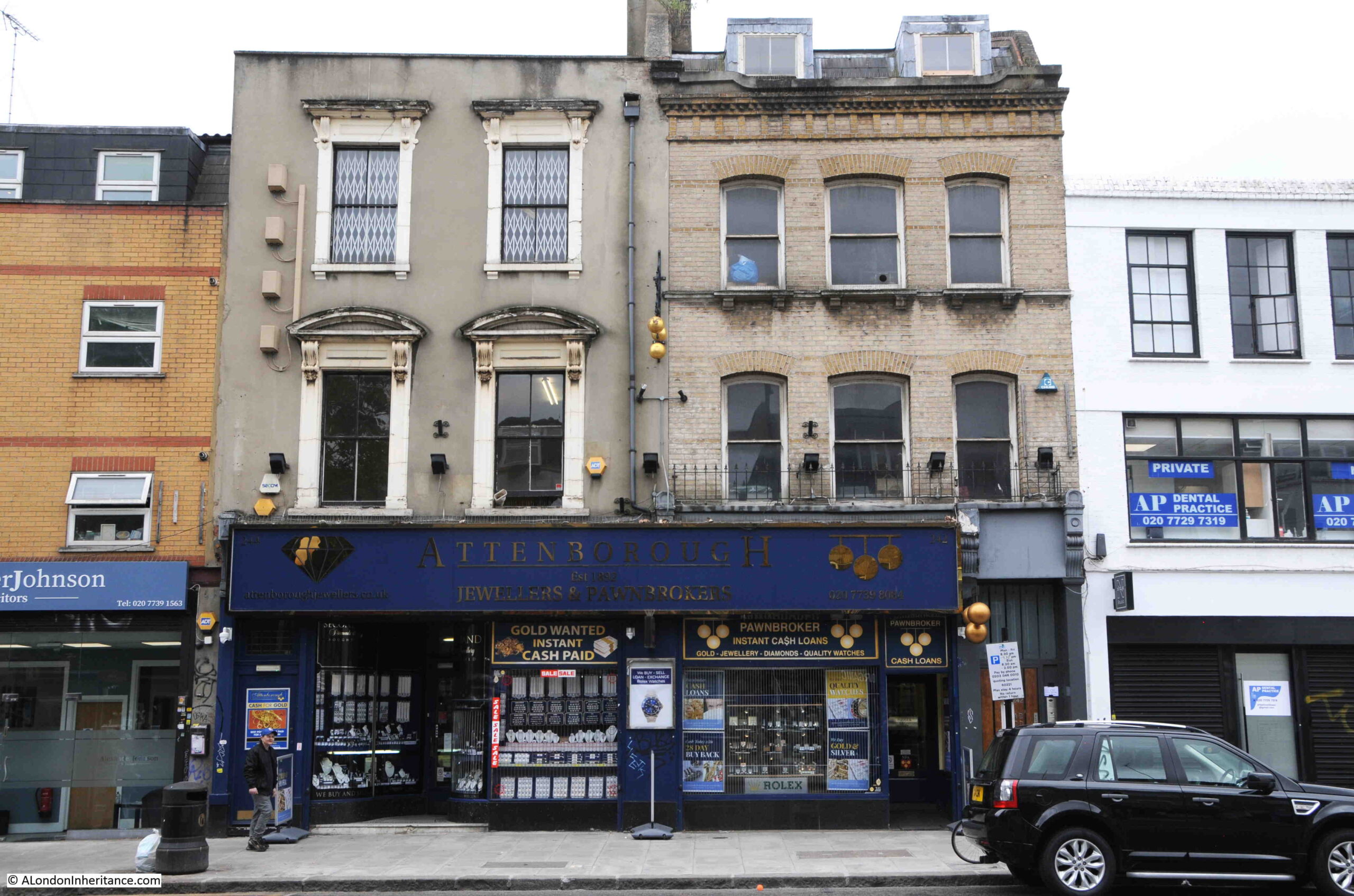
It is unusual for the same business to be operating in the same place after almost 40 years, and Attenborough Jewellers and Pawnbrokers have been at the same site for much longer having first opened here in 1892.
Apart from the ups and downs of the economy, the business seems to have had a reasonably quiet 131 years of trading, apart that is from the risk that any business with high value goods has to run, such as reported in the Eastern Post and City Chronicle on the 23rd of October, 1920:
“RAID ON A JEWELLERS: A daring attempt was made on Tuesday night by several men attempting to obtain possession of some valuable jewellery on the premises of Messrs. Attenborough Jewellers and pawnbrokers of 244, Bethnal Green Road. The weapon used was a hammer, and the thick plate glass window was smashed. The thieves were disturbed by a passer by and made off without obtaining any booty.
An unemployment meeting was being held at the time at the corner of Bethnal Green Road.”
The last sentence of the above article is rather strange, and seems to try and link an unemployment meeting with the robbery.
The Attenborough website only mentions the business in Bethnal Green Road, however there have been a few other businesses with the same name and business description across London, so I do not know if they were once all part of the same business, or the naming is just a coincidence.
Attenborough Jewellers and Pawnbrokers appears to have had a branch on Oxford Street in 1940, as in the following article dated the 5th of February, 1940, it is the same name, and the same description of “jewellers and pawn brokers”:
“STANLEY HILTON THURSTON, the prisoner who escaped from Lewes Gaol on August 9 last year was recaptured dramatically in London to-day.
The man, for whom the police have been searching for almost six months, walked into a jeweller’s shop in Oxford-street and was endeavouring to make a transaction when suspicions were aroused, and the police were called.
When the police questioned Thurston, he vaulted the counter and ran into the street. He was chased by the young assistant at the shop, who leaped on his back and brought him crashing to the pavement. Four police officers held him down while a taxi was called to take him to the police station.
The manager of the shop – Messrs. Attenborough, jewellers and pawnbrokers, described Thurston as ‘a real tough guy’. Thurston, a native of Manchester was serving sentences of five years penal servitude for a jewel robbery and five years preventative detention as an habitual criminal when, with a companion, he made his daring escape.
They were mistaken for harriers when seen wearing singlets in Lewes High-street. Thurston posed as a runner when he escaped Liverpool Gaol in 1930.”
Other newspaper articles include a reference to another Attenborough’s shop, also a “jewellers and pawn brokers” at 193 Fleet Street. and also one in Brompton Road
As with the businesses with the same name across London, the Attenborough’s in Bethnal Green Road was both a jeweller and a pawnbroker, and the business still has the three gold balls of the pawnbroker on the front of the building:
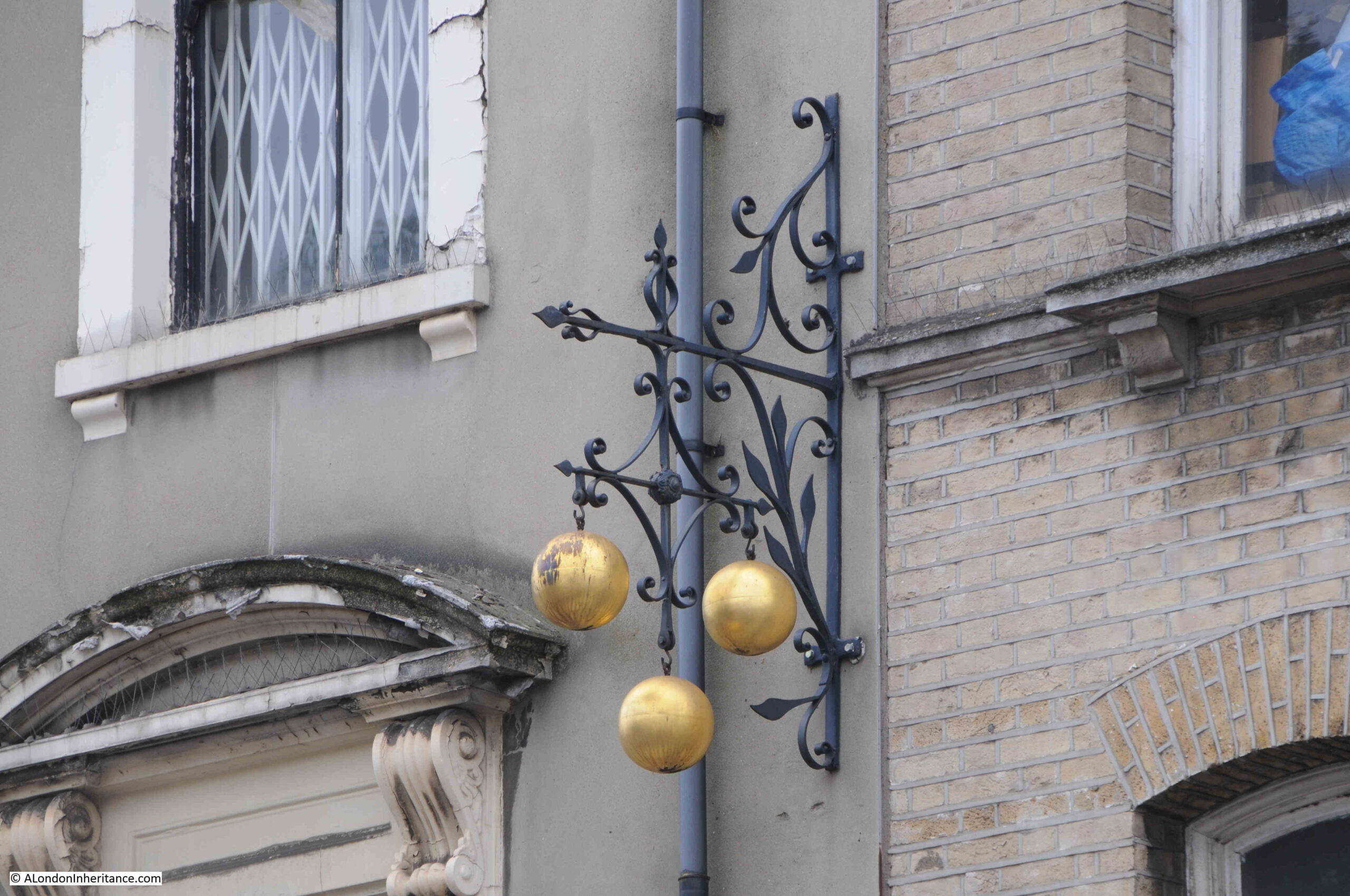
The use of three gold balls as the symbol for a pawnbroker dates from the time when most people could not read, and a symbol was needed to show the location of a particular business.
The three balls seems to have a number of possible origins.
One origin is a story that Saint Nicholas gave three bags of gold to the three daughters of a poor man, providing them with the means to get married.
Another possible origin is that the sign was used by Lombard lenders, who were money lenders and early bankers who came from central and northern Italy. The name Lombard is associated in the City of London with Lombard Street, where Lombard merchants settled in the 12th century.
The association between Lombards and pawnbrokers is such that in a number of European countries variations of the name are used for a pawnbroker, for example Lommerd in the Netherlands.
Whatever the origins of the symbol, the practice of pawnbroking goes back many centuries, where you would handover something you owned for a cash sum, with the ability to retrieve the object following payment of the original sum of money, plus interest.
The pawnbroker was often the last resort for the poor, including those who worked and did not have enough money to last to their next pay day.
For the last few hundred years, pawnbroking has been a regulated activity. The Pawnbroker Act of 1785 brought in the licensing of pawnbrokers, with those operating in London having to pay a fee of £10, and those in the rest of the country £5 for their licence. The act limited the rate of interest they could charge to 0.5% with loans being limited to one year.
An interest rate of 0.5% did not go down well with those in the trade, and 15 years later in 1800, another Pawnbroker Act raised the maximum interest rate to 1.5%.
Various acts continued to modify the way the trade was conducted, with conditions being placed on the trade to protect the individual, for example that a pawnbroker could be fined if he traded with a person who was drunk.
Pawnbrokers have had something of a renaissance in recent years, and many have also tried to move their image upmarket, for example, with a trade in luxury watches.
Probably helped by the current cost of living, one major chain of pawnbrokers recently increased their profits by around 30%, and highlighted that “as continued momentum in our core pawnbroking business provides a robust revenue and profit foundation for the remainder of the financial year.”
I searched Google for the number of pawnbrokers in London and Yelp came up with a total of 203 (their page link on Google was “The Best 10 Pawn Shops in London” – written in the way that Google likes, but a rather strange name for a list of pawn brokers.)
Hopefully Attenborough’s will be in business at 244 Bethnal Green Road for a good many years to come.
The expansion of the Attenborough business between the 1986 and 2023 photos shows the occupation of the ground floor of the building on the right of the 1986 photo.
This is very typical of streets such as Bethnal Green Road, where buildings, many of which were probably once fully residential, have had their ground floors converted into shops, and these businesses expand and contract across neighbouring buildings over time:
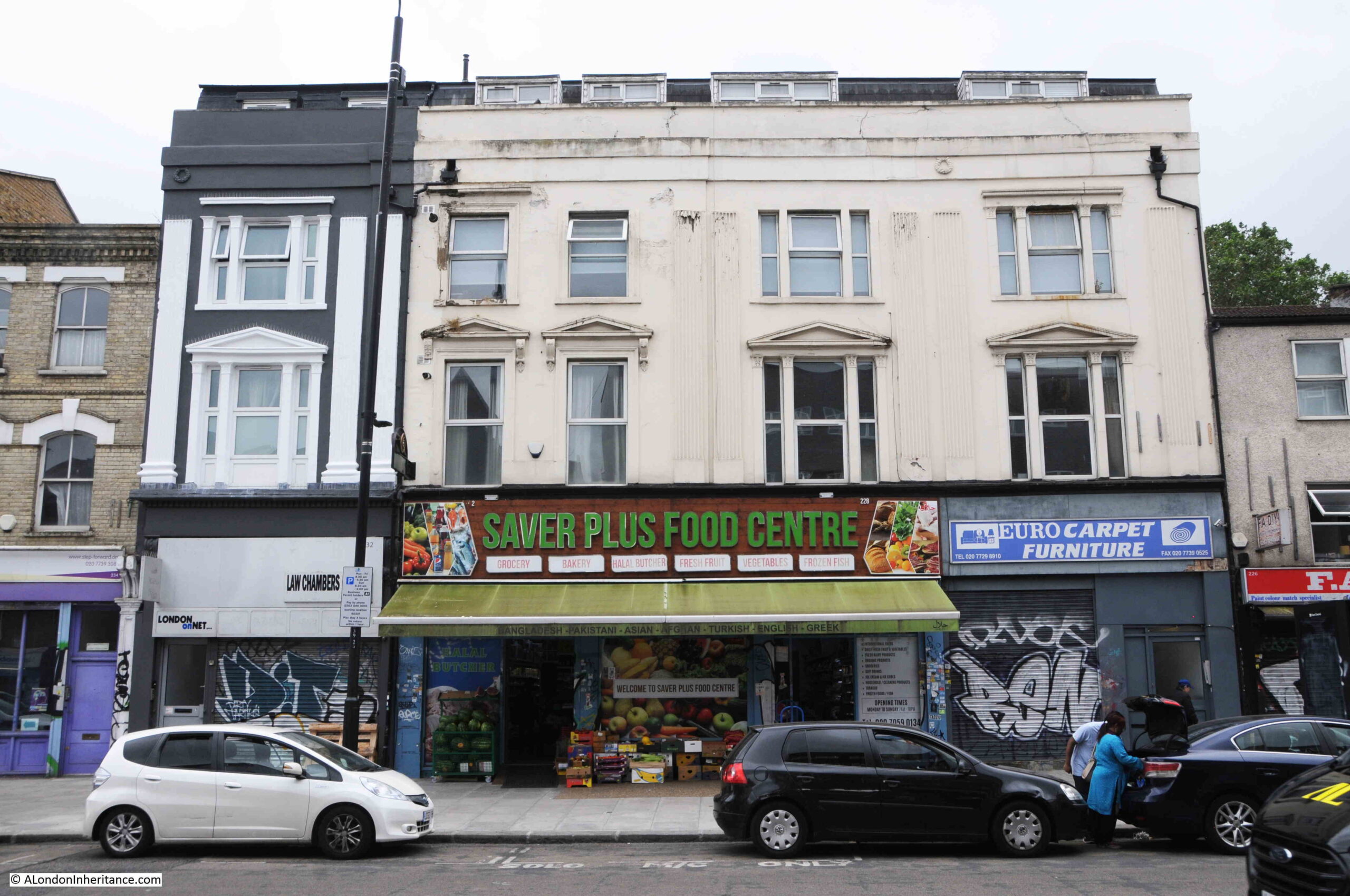
There are also reminders of the once thriving pubs that catered for the inhabitants of Bethnal Green:
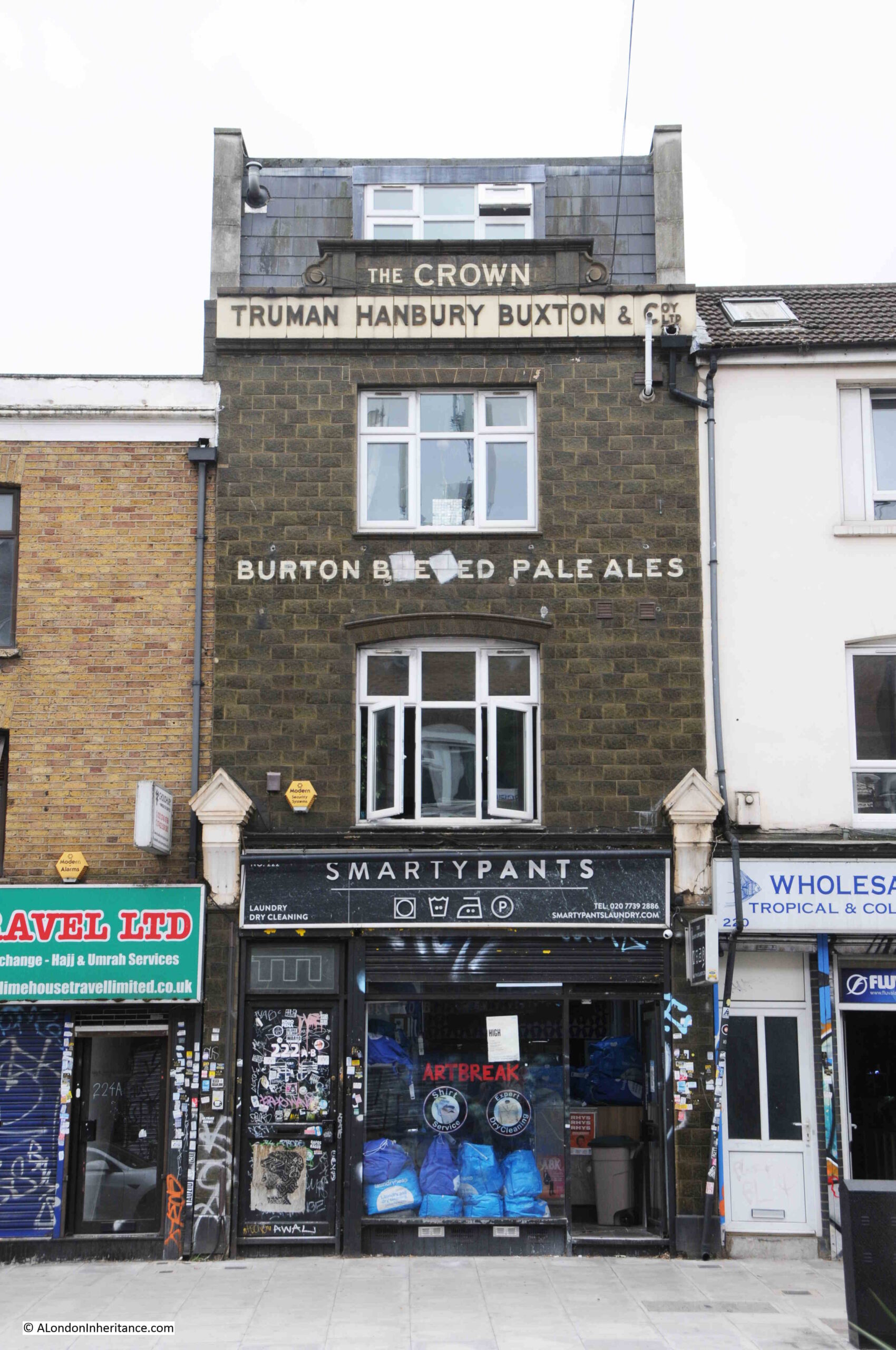
There are some lovely side street off Bethnal Green Road, such as where these small 19th century brick workshops can be found in Gibraltar Walk:
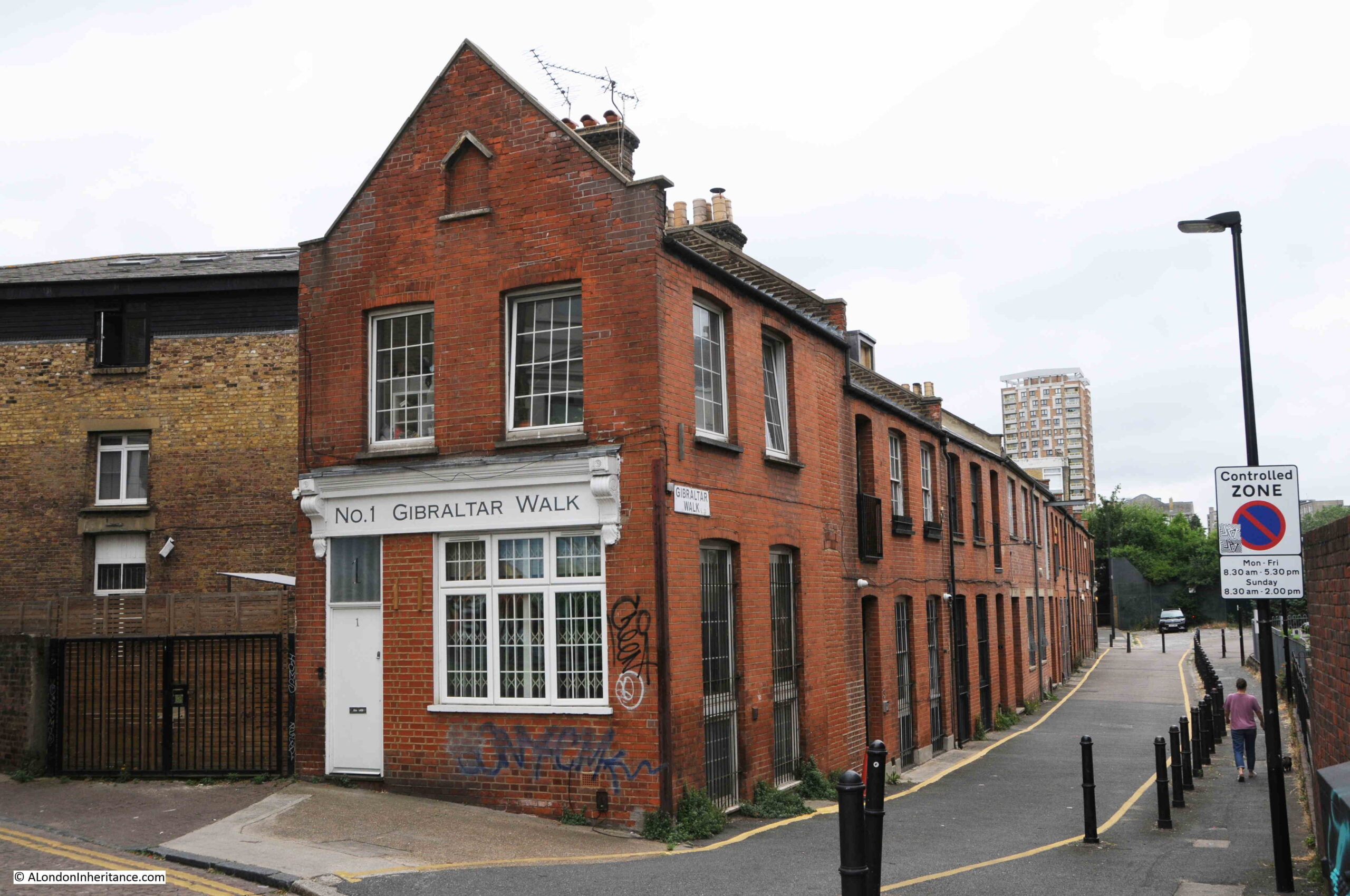
This area of east London is a magnate for murals, street art and graffiti, and there was much to be seen as I headed towards Liverpool Street Station:
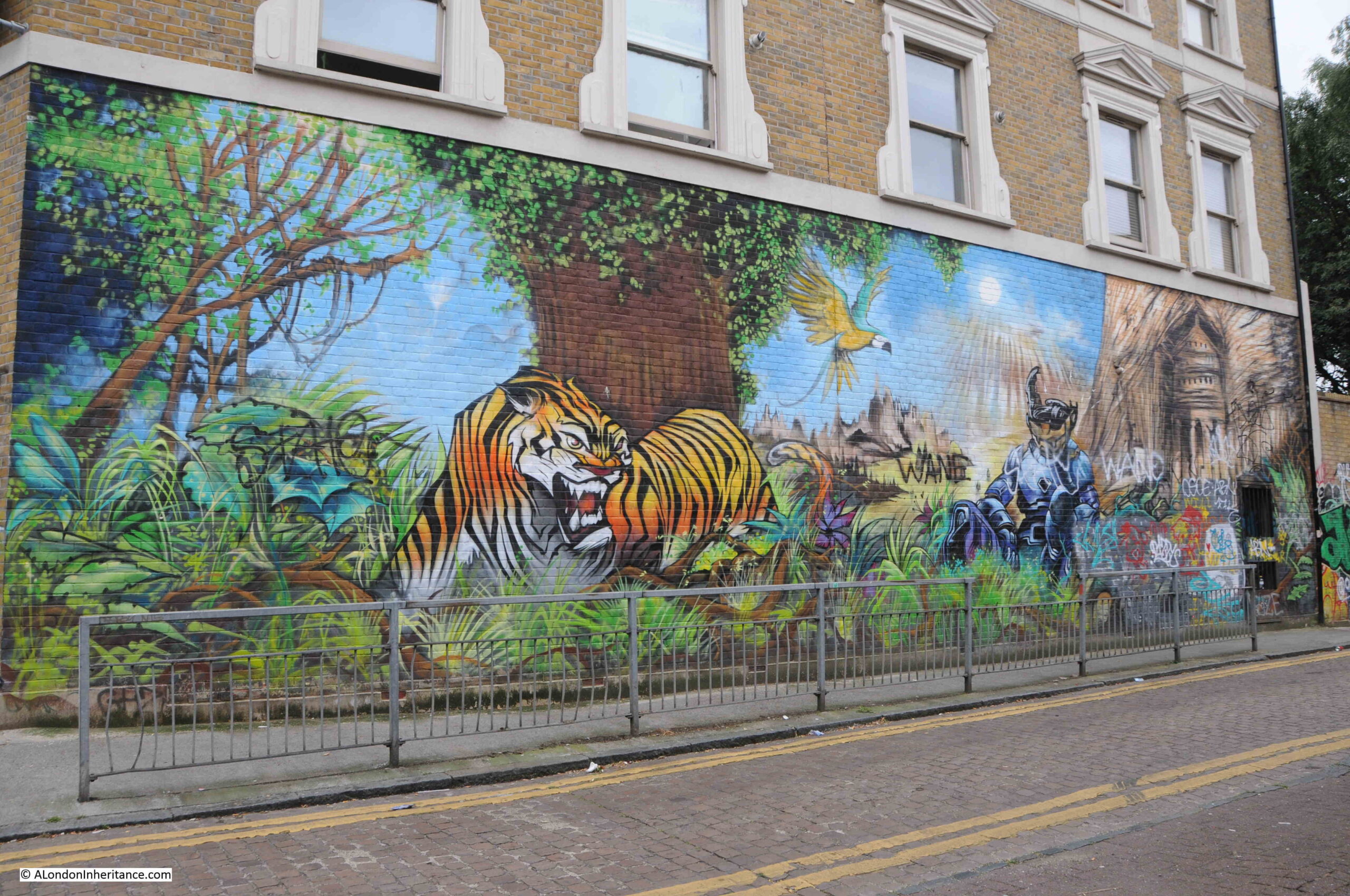
Turville Street – this has covered up an area that was used for paste up advertising:
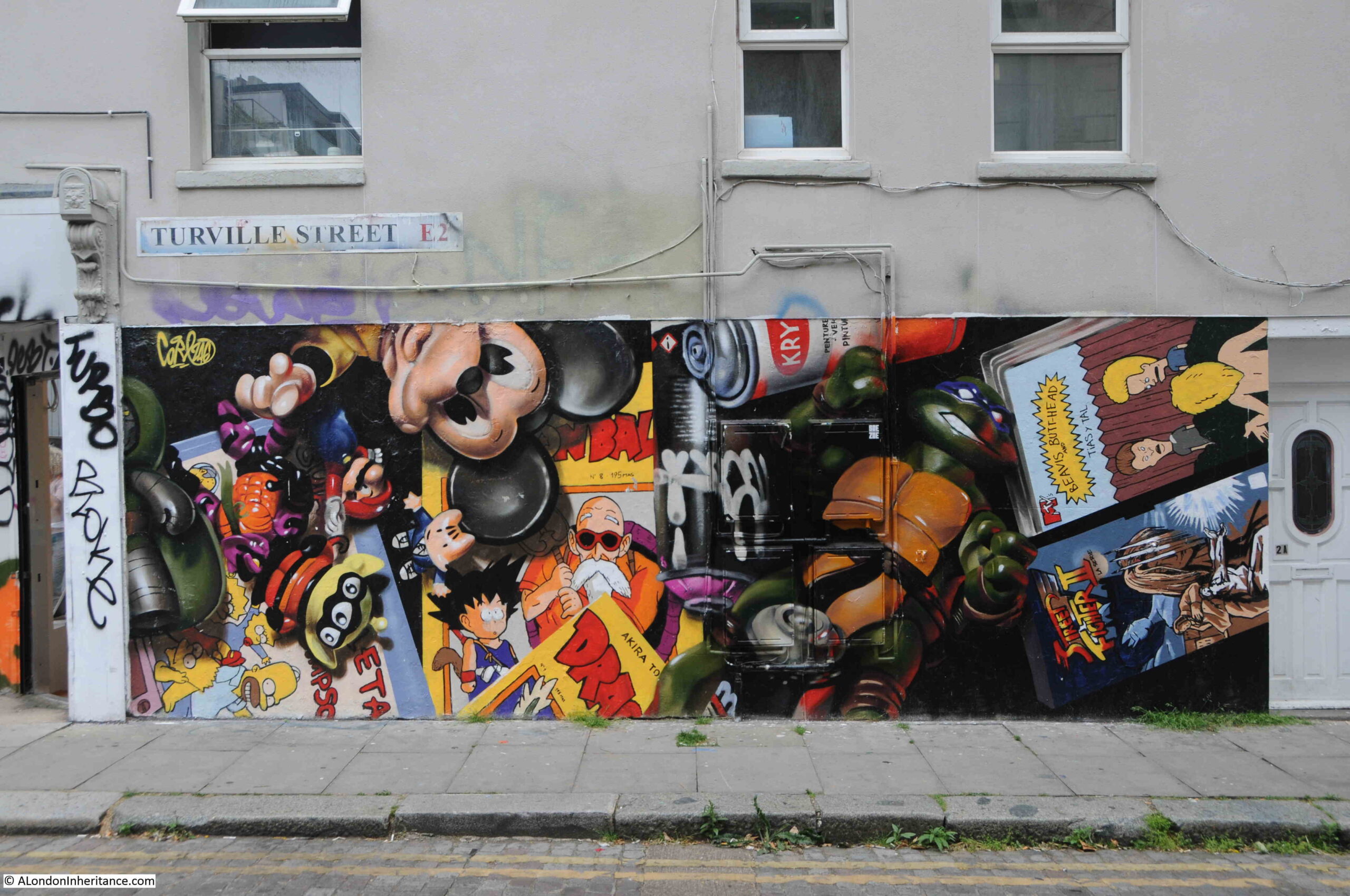
Braithwaite Street, E1:

On the corner of Braithwaite Street and Quaker Street there was a car wash business for several years. Today, there is a three piece artwork created by Cold War Steve:
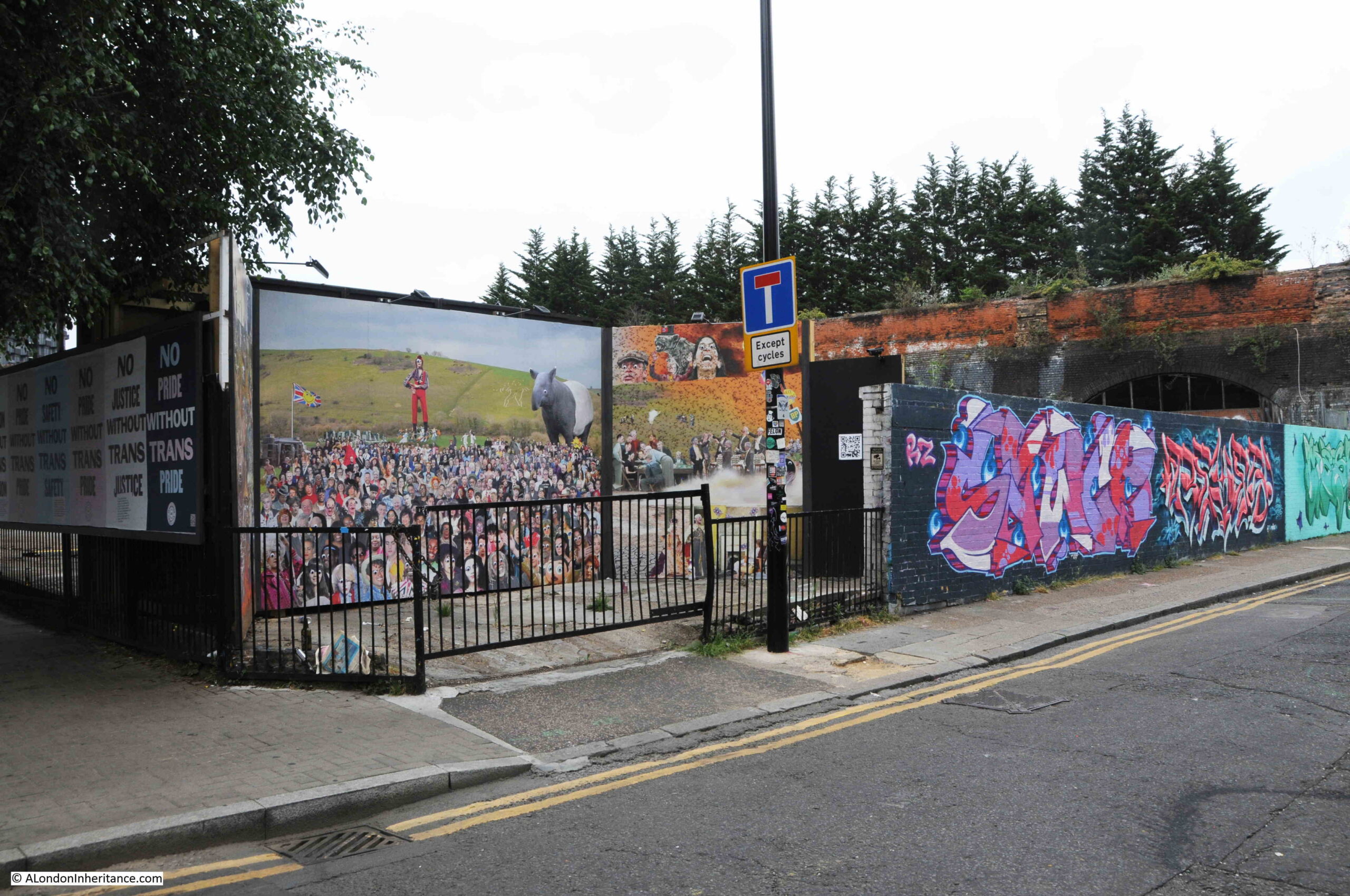
Who continues the tradition of using art and satire to comment on the politics of the day:
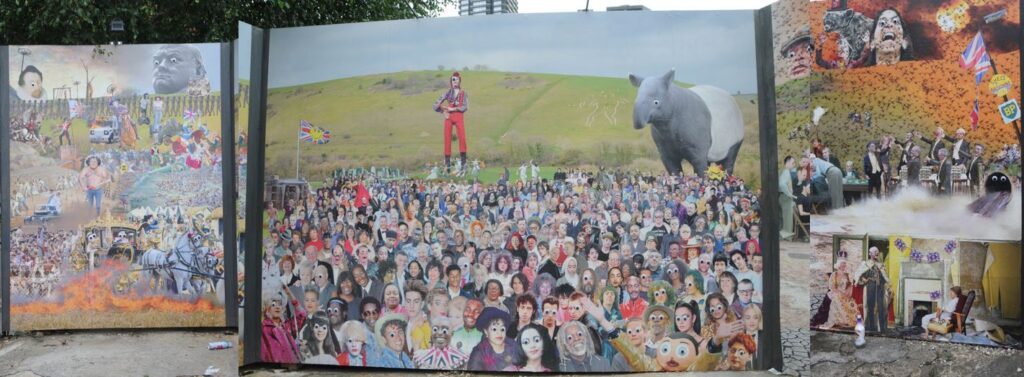
It is always fascinating to explore the streets of Bethnal Green, and to find that Attenborough’s has expanded and continued in business since photographed in 1986.
The trade of a pawn broker has existed for very many centuries, and I suspect will continue to do so for a long time to come.

50 years ago I bought a beautiful septagonal evening watch at Attenborough‘s on the corner of Fleet Street and Chancery Lane for 40 pounds. I was distressed toi see the shop is now a sandwich bar or something similar.
I’ve been told that the pawnbroker symbol originated from the family crest of the Medici family in Florence,, a family of bankers to be sure. Tuscany, not Lombardy, but close!
Fascinating post. Makes me want to revisit the area to see the street art. Recently I came across the use of the word’uncle’ for pawnbroker as in ‘I’m off to see my uncle’. In all my 70 years in London it was new to me. And of course there is the old nursery rhyme ‘Pop goes the weasel’. I’m pretty sure the Eagle is still on the City Road.
Is this the same family as owned Attenborough’s at the corner of Chancery Lane and Fleet Street:
https://londonstreetviews.wordpress.com/2015/01/07/george-and-richard-attenborough-jewellers-and-pawnbrokers
Sadly, this enterprise failed to survive covid.